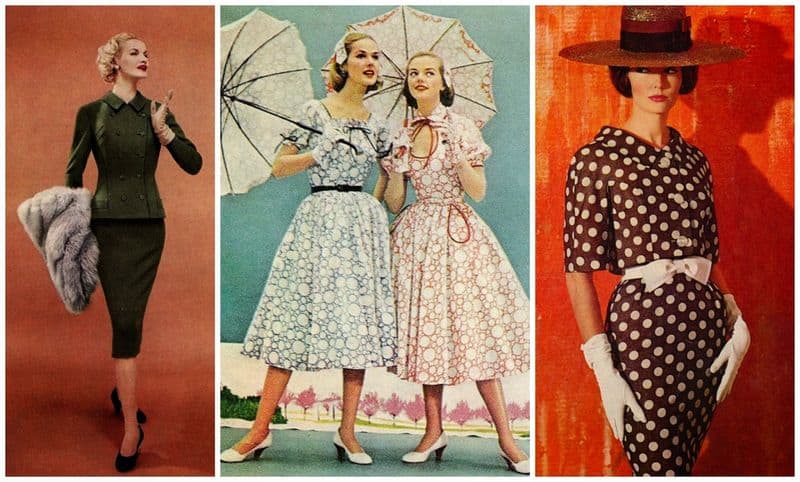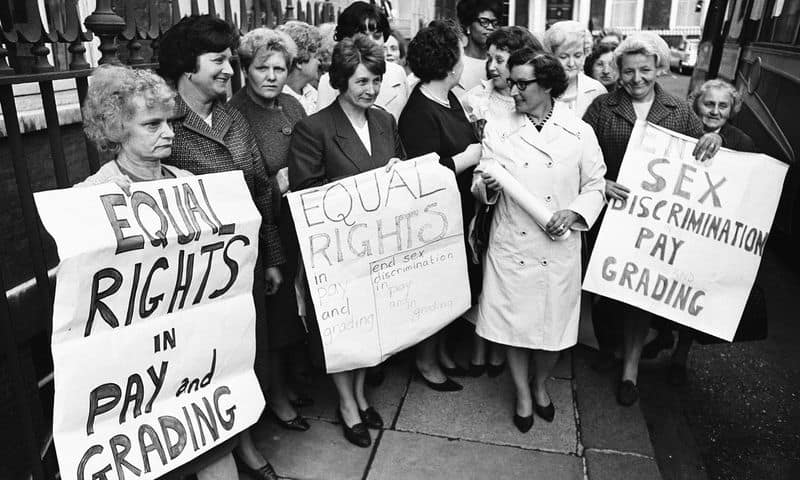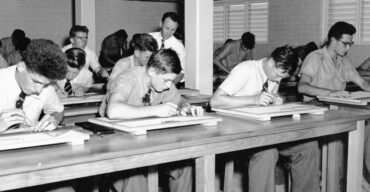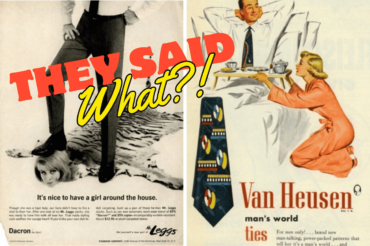The 1950s were a time of significant gender inequality, which saw women limited in their rights and freedoms. Many everyday activities that women today consider routine were once forbidden or difficult to access. This blog post explores 15 things women couldn’t do in the 1950s, highlighting the progress society has made in gender equality and the freedoms women now enjoy.
1. Freely Choose Hairstyles

In the 1950s, societal expectations often dictated women’s hairstyles, leaving little room for personal expression. Women were expected to wear their hair in conservative styles that conformed to the era’s feminine ideals. Today, the freedom to choose any hairstyle reflects broader autonomy in personal choices.
From bold cuts to vibrant colors, modern women express individuality through their hair without fear of societal backlash. The availability of diverse styling tools and products supports this freedom.
Encouraging self-expression through hairstyles is now a norm, allowing women to break free from outdated conventions and embrace their unique identities.
2. Wear Comfortable Footwear

In the 1950s, fashion dictated that women often wore high heels, even in everyday settings, sacrificing comfort for style. This societal expectation restricted their mobility and comfort in daily activities.
Modern footwear has revolutionized this norm, offering women the choice to prioritize comfort without compromising style. From athletic sneakers to ergonomic flats, options abound for every occasion.
This evolution in footwear not only promotes physical well-being but also symbolizes women’s liberation from restrictive norms. Choosing comfort over convention signifies a broader cultural shift towards personal autonomy and well-being.
3. Wear Pants in Public Spaces

In the 1950s, women were expected to wear dresses or skirts in public. Pants were viewed as inappropriate and often frowned upon. This wasn’t just a fashion statement; it was a reflection of societal expectations. Women wearing pants could face criticism or even be barred from entering certain establishments.
The choice of clothing was less about comfort and more about conforming to gender norms. Today, women freely express themselves through varied fashion choices, but this wasn’t the case back then. Pants for women became a symbol of independence and slowly gained acceptance over time.
4. Obtain a Credit Card

Women in the 1950s faced significant barriers when applying for credit cards, as these were not typically issued to them without a male co-signer. Credit was a means to independence, yet women found themselves dependent on men for financial transactions.
Without credit, women had limited purchasing power, affecting their ability to buy homes or start businesses. The situation remained largely unchanged until legislation like the Equal Credit Opportunity Act. Today, women can apply for and receive credit cards independently, reflecting their equal standing in financial matters. This change marked a crucial step toward gender equality.
5. Pursue Higher Education

Access to higher education for women in the 1950s was limited by societal expectations and policies favoring men. Universities often imposed quotas on female admissions or excluded them from certain programs.
Women’s educational pursuits were frequently discouraged, with many expected to prioritize domestic roles. This limitation hindered career opportunities and personal growth. Today, women attend universities in equal numbers to men, pursuing diverse fields of study. Education empowers them to seek careers of their choice, contributing significantly to various sectors. The progress in women’s education reflects broader societal changes in gender equality.
6. Get Equal Pay

The concept of equal pay for equal work was far from reality in the 1950s. Women who worked often earned significantly less than their male counterparts, even in identical roles. This wage gap was justified by stereotypes about women’s capabilities and family roles.
Such disparities limited women’s economic independence and reinforced gender inequality. The struggle for equal pay has been long and ongoing, with legal advancements made through acts like the Equal Pay Act. Today, while progress is evident, the fight continues to ensure pay equity across all professions, striving for complete parity.
7. Access Birth Control

In the 1950s, access to birth control was severely restricted, with many states banning contraceptives entirely. Women had limited control over their reproductive health, impacting their personal and professional lives.
Without reliable birth control, family planning was challenging, leading to larger families and limited career opportunities. It wasn’t until the 1960s that birth control became more accessible, revolutionizing women’s autonomy. Today, women can make informed choices about their reproductive health, supporting their rights and freedoms. The availability of birth control has been a cornerstone in the movement for women’s rights and gender equality.
8. Work Certain Jobs

The job market in the 1950s was highly gender-segregated, with women often confined to roles like secretaries, teachers, or nurses. Opportunities in fields like engineering, law, or medicine were scarce, as societal norms dictated ‘appropriate’ jobs for women.
This segregation limited women’s career growth and economic independence. Breaking these barriers involved challenging stereotypes and advocating for policy changes. Today, women pursue careers across all sectors, from technology to leadership roles. The shift reflects evolving societal attitudes and the recognition of women’s capabilities, allowing them to contribute fully to the workforce.
9. Acquire Property

In the 1950s, women faced significant hurdles in acquiring property. Laws often required a male co-signer for real estate transactions, limiting women’s ability to own homes or land independently. This restriction was rooted in perceptions of women’s financial reliability.
Owning property was a means to build wealth and security, and these limitations curtailed women’s economic progress. Over time, legislative changes have empowered women to own property under their own names. Today, property ownership is accessible to women, enhancing their financial stability and independence, and contributing to broader societal development.
10. Join Military Combat Roles

In the 1950s, women were restricted from serving in military combat roles. While they could join the armed forces, their participation was limited to support roles like nursing or administration. Combat positions were deemed unsuitable for women, based on gender stereotypes.
This exclusion limited career advancement and recognition in the military. Over time, policies have evolved, allowing women to serve in combat roles and rise to leadership positions. Today, women in the military can pursue the same opportunities as men, contributing fully to defense and national security, reflecting broader shifts toward gender equality in various sectors.
11. Access Competitive Sports

Competitive sports were largely inaccessible to women in the 1950s, with limited opportunities for participation. Many sports leagues and events were male-dominated, excluding women from competitions and athletic development.
This lack of access affected women’s physical and mental well-being, as sports contribute to health and confidence. Progress in women’s sports began in the following decades, with increased opportunities and representation. Today, women compete at elite levels across various sports, enjoying recognition and support. The evolution of women’s sports underscores the importance of equality in all areas of life, inspiring future generations.
12. Serve as Astronauts

In the 1950s, women were excluded from astronaut programs, with space exploration reserved for men. This exclusion was based on stereotypes about women’s physical and emotional suitability for space travel.
Women with scientific and engineering expertise were relegated to supportive roles, denying them the chance to become astronauts. As societal views evolved, women like Sally Ride broke barriers, paving the way for future generations. Today, women serve as astronauts, contributing to space exploration and scientific advancements. This inclusion reflects progress in recognizing women’s capabilities and ensuring equal opportunities in groundbreaking fields.
13. Seek Divorce Easily

Divorce was not easily accessible for women in the 1950s, as legal barriers and societal stigma discouraged the dissolution of marriages. Women often needed to prove fault, making the process lengthy and difficult.
This restriction trapped many women in unhappy or abusive marriages, with limited legal and social support. Over the years, reforms have simplified divorce proceedings, providing women with more autonomy and protection. Today, seeking a divorce is a relatively straightforward process, helping individuals make decisions best suited for their well-being. This change has been crucial in advancing women’s rights and personal freedom.
14. Attend Solo Concerts

In the 1950s, attending a concert solo was nearly unimaginable for women. Cultural norms dictated that a woman had to be accompanied, especially in public settings like concerts. The idea of a woman enjoying music alone was frowned upon, reflecting the era’s restrictive views on female independence.
Flash forward to today, women attend concerts alone without a second thought. This freedom to enjoy music solo celebrates individuality and personal choice. It’s a simple act, yet it symbolizes the broader strides in women’s self-expression and autonomy.
The shift reflects changing perceptions and the growing acceptance of women as independent individuals.
15. Drive a Car

In the 1950s, driving a car was not as accessible for women as it is today. Many women faced societal disapproval when taking the driver’s seat, as driving was seen predominantly as a male activity. Often, women required a male chaperone or permission from their husbands to get behind the wheel.
This restriction stemmed from the belief that women lacked the ability to handle the mechanical aspects of driving. Despite these challenges, some courageous women defied norms and became skilled drivers, paving the way for future generations to enjoy driving freedom. Ultimately, these pioneers challenged societal perceptions and changed the narrative.



